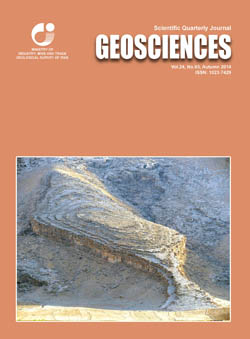Document Type : Original Research Paper
Authors
1 Ph.D. Student, Department of Geology, Science and Research Branch, Islamic Azad University, Tehran, Iran
2 Professor, Department of Mining Engineering, Lahijan Branch, Islamic Azad University, Lahijan, Iran
3 Associate Professor, Department of Geology, Science and Research Branch, Islamic Azad University, Tehran, Iran
4 Associate Professor, Department of Geology, Islamshahr Branch, Islamic Azad University, Islamshahr, Iran
Abstract
Heiran area is located in northwest of Ardabil and southwest of Caspian Sea. Field evidences indicate submarine volcanic activities in this area. The rocks in this area are of basaltic composition. The outcrops of pillow lavas, prisms, dykes and lava flows in different points are evidences showing the existence of oceanic crust in this area. Studies on other locations of southern margin of Caspian Sea as well as structural and petrological similarities between Heiran and these areas may confirm the fact that Heiran area is part of geo-suture of Caspian Sea southern margin. The submarine lavas in this area attributed to late Cretaceous-Eocene. With regard to petrographical characteristic, these rocks range from andesitic basalt to olivine basalt, and belong to alkaline series. The tectonomagmatic environment of these lavas is related to back arc basin. These magma originated from sub continental lithospheric mantle and formed in a supra subduction environment. During late Cretaceous-middle Paleogene, the closure of Sevan-Akera-Qaradagh led to the formation of marginal basin in the form of a back arc basin in the margin of Caspian Sea. The submarine lavas of Heiran likely originated from the volcanic activities in this marginal basin.
Keywords

